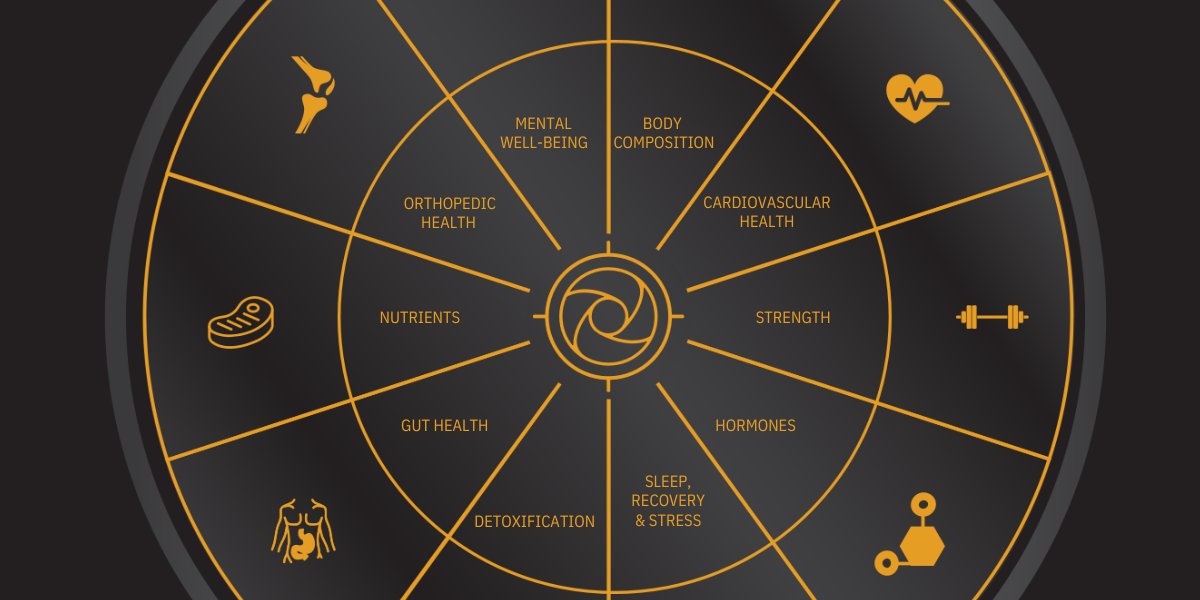Understanding the Wheel of Health: Stark's Comprehensive Approach to Well-Being
At Stark, we believe that true health encompasses far more than just physical fitness. It's about achieving a harmonious balance across all aspects...
.png?width=70&height=70&name=Stark_LogoMark%20(1).png)
3 min read
 Stark
:
Aug 25, 2024 4:00:00 PM
Stark
:
Aug 25, 2024 4:00:00 PM

Pregnancy is a beautiful and transformative period in a woman's life. However, it often comes with its share of physical challenges and discomforts. That's why incorporating soft tissue care and chiropractic treatments during and after pregnancy can be a game-changer for both mom and baby. In this blog post, we will explore the benefits of these therapies, how they can support you during pregnancy, aid in the birthing process, and assist in postpartum recovery.
Pregnancy brings about numerous changes in a woman's body, from hormonal shifts to weight gain. These changes can place considerable stress on muscles, ligaments, and joints. Soft tissue care, which includes therapies like active release techniques (ART) and myofascial release, can alleviate these stresses and provide relief. Regular treatment helps maintain tissue health, improves circulation, and reduces muscle tension, making the pregnancy experience more comfortable.
Soft tissue care also supports mental well-being. The relaxation it promotes helps reduce stress and anxiety, which are common during pregnancy. This dual benefit of physical and mental relief makes soft tissue care a valuable component of prenatal wellness.
Soft tissue includes muscles, ligaments, and fascia. During pregnancy, these tissues undergo significant changes to accommodate the growing baby. The increased weight and shifting center of gravity can lead to muscle imbalances, tightness, and discomfort.
Hormones like relaxin, which are released during pregnancy, cause the ligaments to become more flexible. While this is necessary for childbirth, it can also make joints less stable and more prone to pain. Soft tissue therapies can help manage these changes by maintaining tissue flexibility and reducing discomfort.
Active release therapy (ART) is a specialized form of soft tissue treatment that targets muscle adhesions and scar tissue. During pregnancy, ART can be particularly beneficial for addressing tension in muscles and improving mobility. Chiropractic care focuses on the alignment of the spine and joints, which can become misaligned due to the physical changes in pregnancy. The neuromuscular therapies work together to provide comprehensive care, and this synergy enhances overall comfort and reduces the risk of pain and injury during pregnancy.
Proper alignment and muscle function are essential for a comfortable pregnancy. Chiropractic adjustments can help alleviate common issues like lower back pain, sciatica, and pelvic pain. ART can address muscle tension and improve circulation, ensuring that both mom and baby receive optimal blood flow and nutrients.
These therapies also support the nervous system. Proper spinal alignment enhances nerve function, which can positively impact overall health and well-being. For the baby, a healthy nervous system in the mother can contribute to better fetal development.
A smooth and efficient birthing process is every expectant mother's goal. Chiropractic care and ART can play a crucial role in achieving this. Proper pelvic alignment ensures that the baby is in the optimal position for birth, reducing the risk of complications and in many cases making labor more manageable.
Soft tissue care can also help prepare the body for the physical demands of childbirth. By maintaining muscle flexibility and reducing tension, these therapies can make the birthing process more comfortable and less stressful for both mom and baby.
The postpartum period is a time of significant physical and emotional adjustment. Soft tissue care and chiropractic treatments can support the body's recovery and help new mothers regain their strength and vitality. Soft tissue therapies can address any muscle tension or adhesions resulting from childbirth, promoting faster healing.
Chiropractic care can help realign the spine and pelvis, which may have shifted during pregnancy and childbirth. This realignment can alleviate pain and improve mobility, making it easier for new mothers to care for their babies and themselves.
Diastasis recti, a common condition during and after pregnancy, involves the separation of the abdominal muscles along the midline. This separation can lead to weaknesses in core stability and increased discomfort for new mothers. Soft tissue care, particularly through techniques such as myofascial release and targeted massage, can play a crucial role in repairing and rehabilitating this condition. By addressing tension in the surrounding muscles and promoting better alignment, these therapies can help restore proper function to the abdominal area. Additionally, soft tissue treatment aids in improving blood flow, which is essential for healing the connective tissues and encouraging the re-establishment of muscle integrity. Overall, integrating soft tissue care into postpartum wellness can significantly support recovery from diastasis recti.
Incorporating neuromuscular care during and after pregnancy offers numerous benefits for both mom and baby. These therapies not only provide physical relief, but also support mental well-being and overall health. By addressing the unique challenges of pregnancy, childbirth, and postpartum recovery, soft tissue care and chiropractic treatments can make this transformative period more comfortable and enjoyable. Consider seeing Stark's neuromuscular team for comprehensive care throughout your pregnancy and beyond, and experience the long-term benefits of a balanced and healthy body. The benefits of soft tissue care and chiropractic treatments extend beyond pregnancy and postpartum recovery. Regular treatment can promote overall health and well-being, helping women maintain their physical and mental health.

At Stark, we believe that true health encompasses far more than just physical fitness. It's about achieving a harmonious balance across all aspects...

In episode 11 of the Health is a Skill podcast, Stark CEO Todd Vande Hei explores ketamine-assisted therapy with Dr. James Leathem, a board-certified...

Do your ankles feel stiff after a long day, are your knees sore after a long walk, or maybe just going up the stairs has become increasingly tough?...